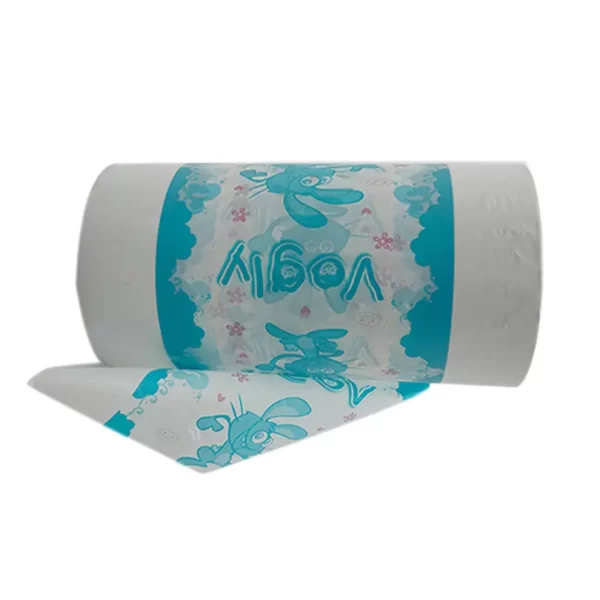Unwrapping Potential: The Pervasive Impact of Breathable Film on Packaging Efficiency
Introduction
In today’s relentlessly evolving commercial landscape, the quest for efficiency and innovation is incessant. The packaging industry is emblematic of this pursuit, continually innovating to enhance efficacy, reduce costs, and improve sustainability. At the forefront of this innovation lies breathable film technology, an unparalleled blend of science and utility, a tool shaping the future of packaging. This comprehensive exploration delves into the unique properties of breathable films, their impact on product shelf life, packaging processes, and product integrity, elucidating how they are revolutionizing the packaging landscape and driving its future.
Part 1: A Dissection of Breathable Films
Breathable films, known also as microporous films, are composed predominantly of synthetic polymers such as polyethylene or polypropylene. The differentiating factor of these films is their ability to selectively allow specific gases to pass through while obstructing others. This gas selectivity effectively creates a ‘breathable’ barrier, a property that has distinguished breathable films as versatile tools in a multitude of industries, from food to pharmaceuticals, and electronics to textiles.
Micro-perforation, a technique used to create microscopic holes in the film, and the addition of specific additives during the production process, allows for the precise tailoring of the breathable film’s permeability. This flexibility caters to the individual needs of various products, marking breathable films as one of the most adaptable innovations in the packaging sphere.
Part 2: Extending Product Shelf Life
Breathable films have made significant strides in enhancing packaging efficiency, particularly with their ability to improve product shelf life. For perishable commodities, such as fruits, vegetables, and meats, maintaining a specific atmosphere within the packaging is critical to extending product freshness and quality.
By permitting the selective exchange of gases, breathable films facilitate a process known as Modified Atmosphere Packaging (MAP). This process slows down the degradation and spoilage rate by maintaining a consistent internal atmosphere that inhibits bacterial growth. This preservation of freshness effectively extends the shelf life of packaged goods, reducing food waste and ensuring customers receive products at their peak quality, thus augmenting customer satisfaction and loyalty.
Part 3: Streamlining Packaging Processes
Breathable films bring significant advantages to the packaging processes themselves. Their lightweight and flexible nature make them easy to handle, mould, and adapt to a myriad of packaging forms, reducing packaging time and streamlining processes. This efficiency manifests as increased productivity and reduced downtime in production lines, ultimately contributing to a company’s bottom line.
The use of breathable films can also diminish the necessity for secondary packaging, such as additional layers of wrapping or protective covers. By offering adequate protection with just a single layer, breathable films can notably cut down on material costs and waste, fostering more sustainable and cost-effective operations. This reduction of material usage aligns with the global push towards sustainability and the responsibility of industries to reduce their environmental impact, making breathable films an environmentally conscious choice.
Part 4: Maintaining Product Integrity
In industries like pharmaceuticals and electronics, where product integrity can be a matter of health and safety, breathable films play an indispensable role. These films safeguard products from environmental elements such as moisture, dust, and temperature fluctuations, maintaining optimal conditions within the package.
Breathable films also permit the escape of potentially harmful volatile organic compounds (VOCs) that may emanate from the products themselves. This escape prevents VOC accumulation and any resultant damage, ensuring the safety and integrity of the product within. By maintaining the quality of the product from production to the customer, breathable films lead to fewer returns and waste, enhancing customer satisfaction and company reputation.
Part 5: Looking Ahead: The Future of Packaging with Breathable Films
Given the myriad of benefits offered by breathable films, their future in the packaging industry appears bright. Ongoing research aims to enhance these films’ properties further, improving their gas transmission rates, moisture control, biodegradability, and even incorporating antimicrobial properties to increase the shelf-life of perishable goods even more.
The development of bio-based breathable films is also a significant stride towards a greener packaging industry. These films, made from renewable resources such as corn starch or sugar cane, are biodegradable and exhibit similar performance characteristics as their synthetic counterparts. The adoption of these green alternatives presents a solution to the environmental challenges posed by traditional breathable films and points towards a sustainable future for the packaging industry.
Moreover, advancements in manufacturing technologies are paving the way for increased cost-effectiveness and energy efficiency in breathable film production. This development will further strengthen the position of breathable films in the packaging industry, enabling them to cater to an even wider range of applications.
Conclusion
Breathable films have indisputably transformed the packaging industry. By enhancing efficiency, extending product shelf life, optimizing packaging processes, and ensuring product integrity, the benefits of breathable films are wide-ranging and substantial. As we navigate towards a future marked by increased sustainability and efficiency, the role of breathable films in shaping the evolution of the packaging industry will continue to be pivotal. As they continue to permeate across industries, breathable films serve as a testament to the power of innovation, holding the promise of an efficient, sustainable, and dynamic future for the packaging world.
Keywords: Breathable Films, Packaging Efficiency, Product Shelf Life, Packaging Processes, Product Integrity, Future of Packaging, Sustainability, Modified Atmosphere Packaging, Volatile Organic Compounds, Bio-Based Breathable Films.
Please visit our website for more product details https://medposnonwoven.com/product-category/pe-film-materials/

